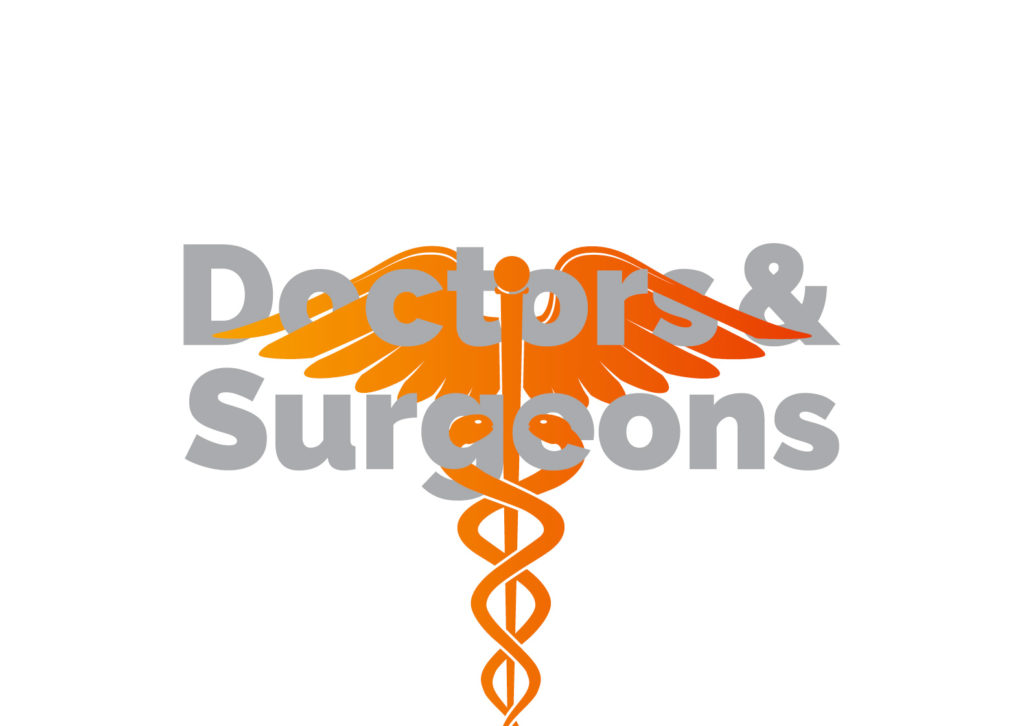Referrals aren’t enough anymore. Doctors and surgeons without a strong online presence are practically invisible to most patients. In fact, a whopping 63% of people will choose one doctor over another exclusively because of their online presence. So does your website rank high enough to outperform the competition? To make it appealing to every potential patient, you need to start from scratch. Here’s how to make websites for doctors:
[easy-tweet tweet=”Referrals aren’t enough anymore. Doctors and surgeons without a strong online presence are practically invisible to most patients.” template=”light”]
What Makes Your Medical Website Different?
Websites designed for doctors and surgeons need to prioritize three factors:
Patient Support
Every website must serve two distinct purposes: it must both convert new visitors and provide value to existing ones. While these functions are critical for any website, they are especially important in the healthcare industry. Both potential and existing patients will always start to look for information on your website. As a result, your medical website should very careful and meticulously balance the needs of both new and returning patients. There are three distinct ways to address the differing needs of your patients.
Minimalism
If you focus exclusively on the most important content and features, you can more easily address the needs of both new and returning patients. That’s the strategy that Stanford’s Valley Medical Oncology Consultants use on their website.
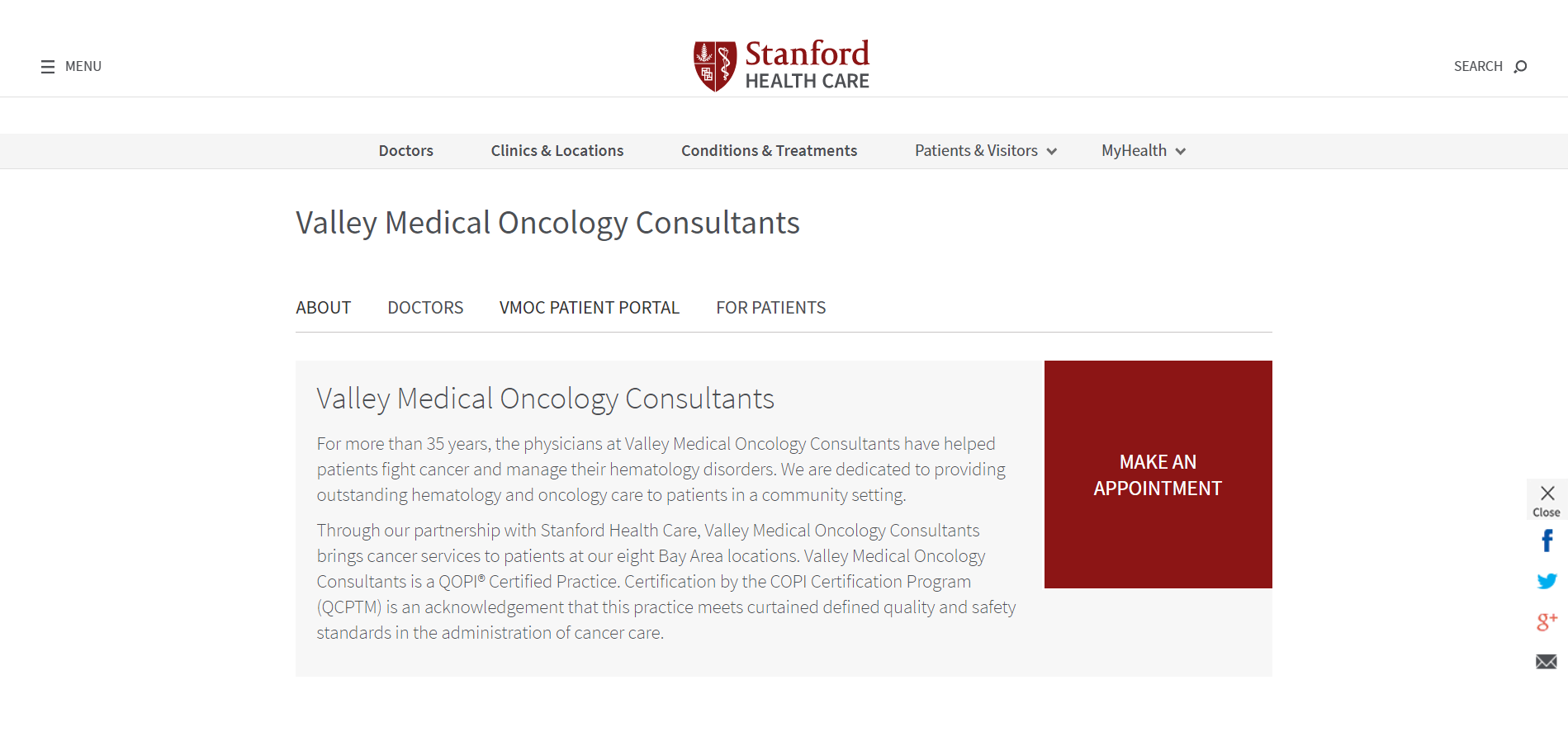
The homepage includes only the bare minimum necessary content. As a result, information is easy to find. The website also includes a “For Patients” section that lists all the necessary forms.
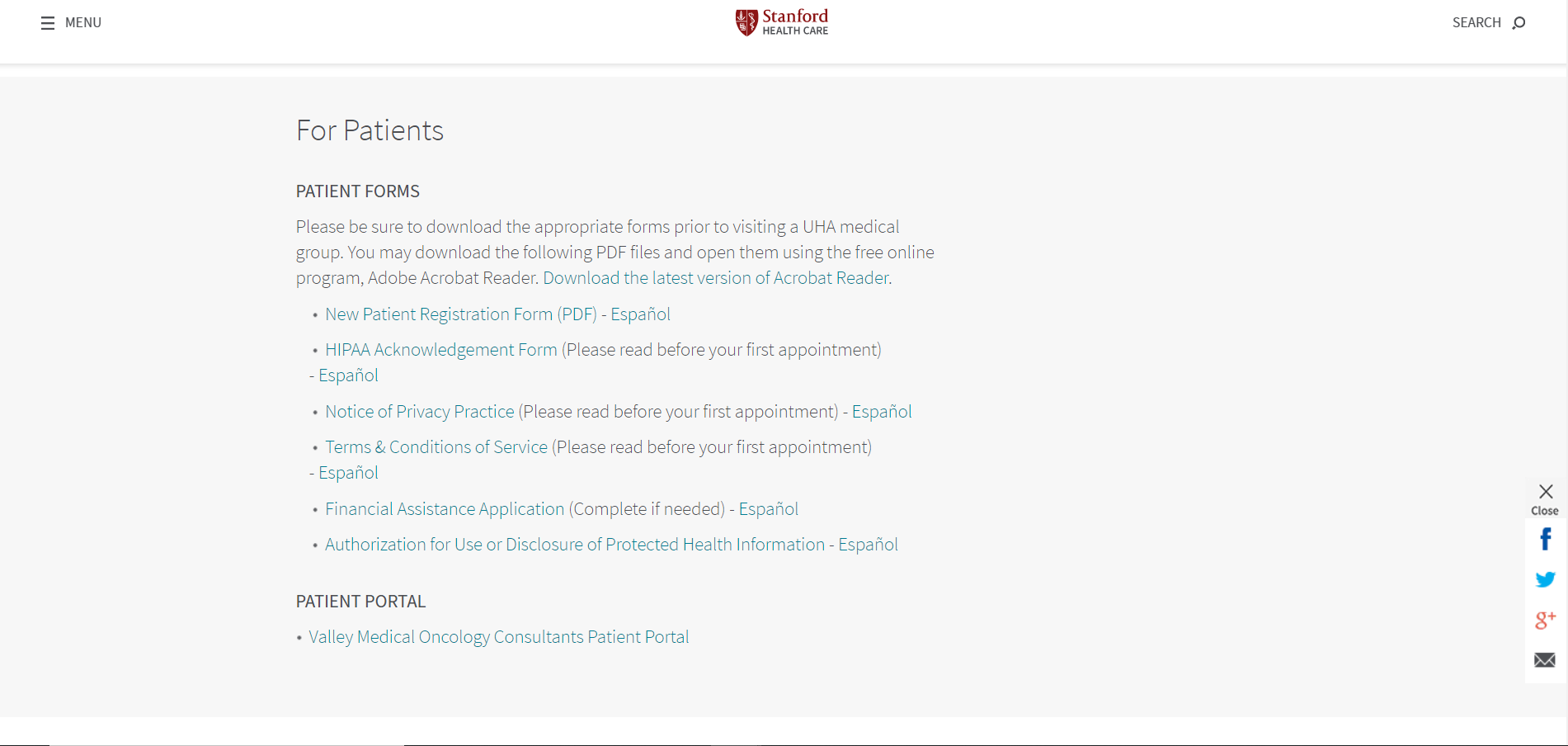
This section is not buried beneath extra content; it has been made readily available for anyone who needs it. Through minimalism, the Valley Medical Oncology Consultants quickly get patients and new visitors the information that they need.
High-Quality Content
The most prominent strategy for balancing new and old patients is to post high-quality blog social media content. The Barrett Plastic Surgery website is the perfect example. Not only does Dr. Barrett regularly update social media, he includes it right on the home page.

The Barrett website is a prime example of a content-rich website. It includes multiple types of content, such as “Before and After” comparisons, blog posts, a podcast, and more. But more importantly, each piece of content responds to patient concerns. Just take a look at Dr. Barrett’s blog.
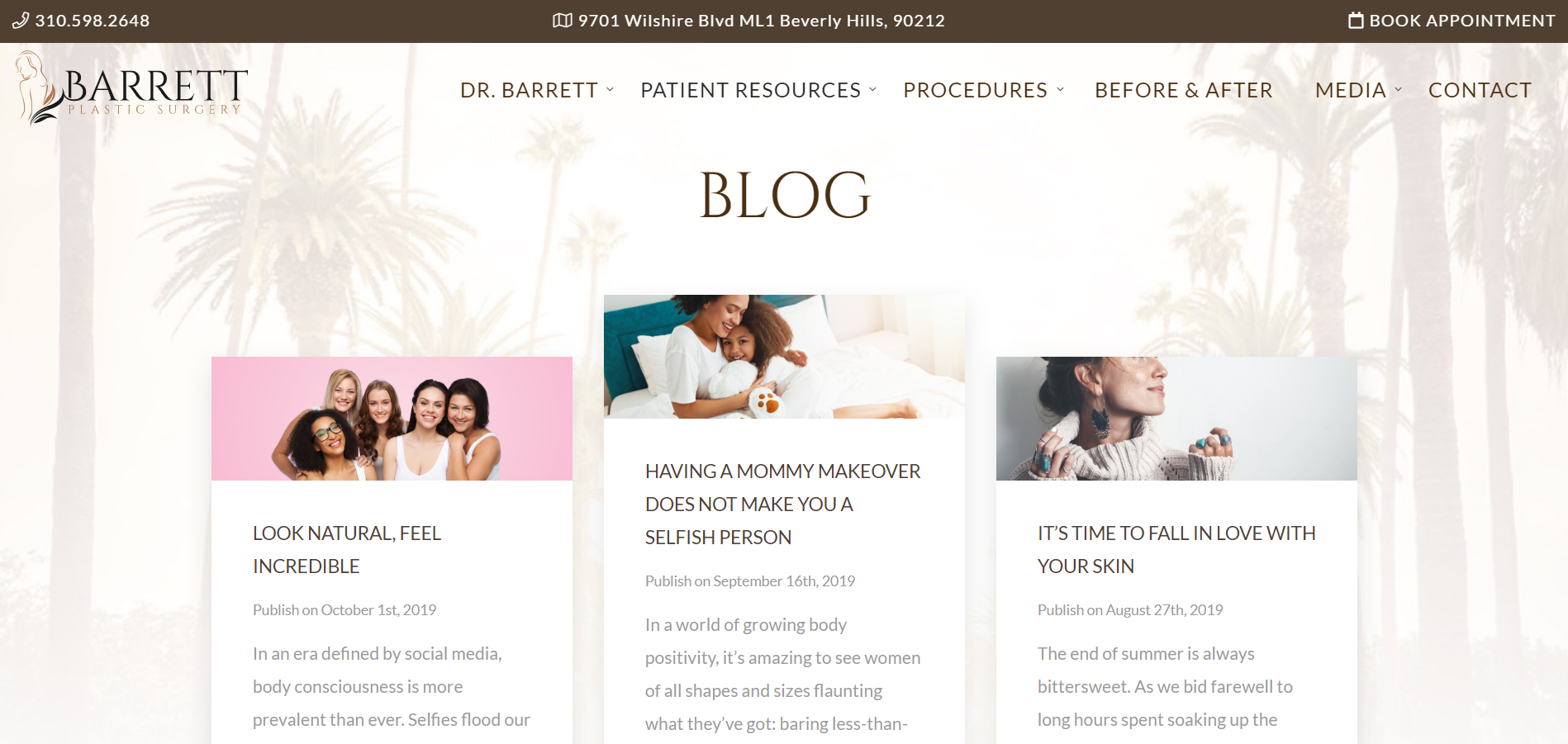
All the custom-formatted posts are written for patients, not other doctors. Posts like “Having a Mommy Makeover Does Not Make You a Selfish Person” alleviate pre-surgery anxieties much better than jargon-filled posts targeted at doctors.
This customer-centric content strategy is especially popular because it comes with a lot of secondary benefits. One of these benefits is SEO. If your content answers relevant customer searches, your website will rank higher. High-quality content also boosts your credibility. Potential customers and returning patients alike will be more likely to trust your knowledge if they see lots of tangible evidence of your expertise. Plus, you’re providing customers with a valuable information service.
Whichever strategy works better depends upon your business. Regardless, you should build your website to help both new and returning patients. Be very careful to maintain that balance.
Comfortable User Experience
Have you ever noticed that most websites built for doctors and surgeons look the same? There’s a good reason for all the similarities: relaxing and professional design make customers feel more comfortable. Comfort is the most important emotion that a medical professional’s website can convey. After all, your patients need to trust you with their health and body. If you don’t make them feel as comfortable as possible, they will turn to someone that does. So if your medical website is going to attract new patients, it should exude comfort at every level of both design and functionality.
Surgeon websites are particularly good at soothing visitors. Take a look at the Barrett Plastic Surgery website again.
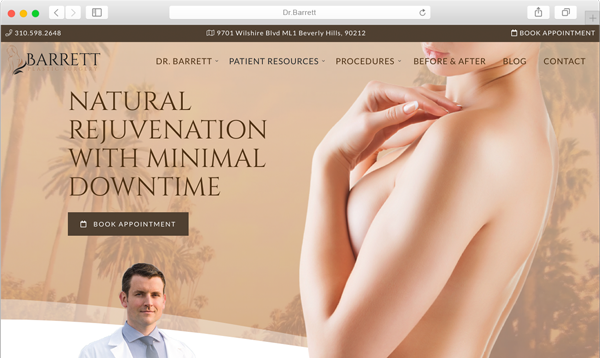
Right off the bat, you know that the website advertises plastic surgery. If the large photo of a woman somehow doesn’t tip you off, the headshot of Dr. Barrett and the bold header definitely will. But the website’s clarity isn’t what makes it unique. All well-designed websites for doctors and surgeons are abundantly clear. The Barrett Plastic Surgery website stands out because every aspect of its design–from the smooth wave-like curves to the warm, neutral color palette–calms and relaxes the visitor. As a result, these plastic surgery services instantly seem more appealing.
However, a medical website can make a visitor feel comfortable without being soothing. For instance, the Arizona Orthopedic and Fracture Surgeons website uses a more active approach to make patients feel comfortable.
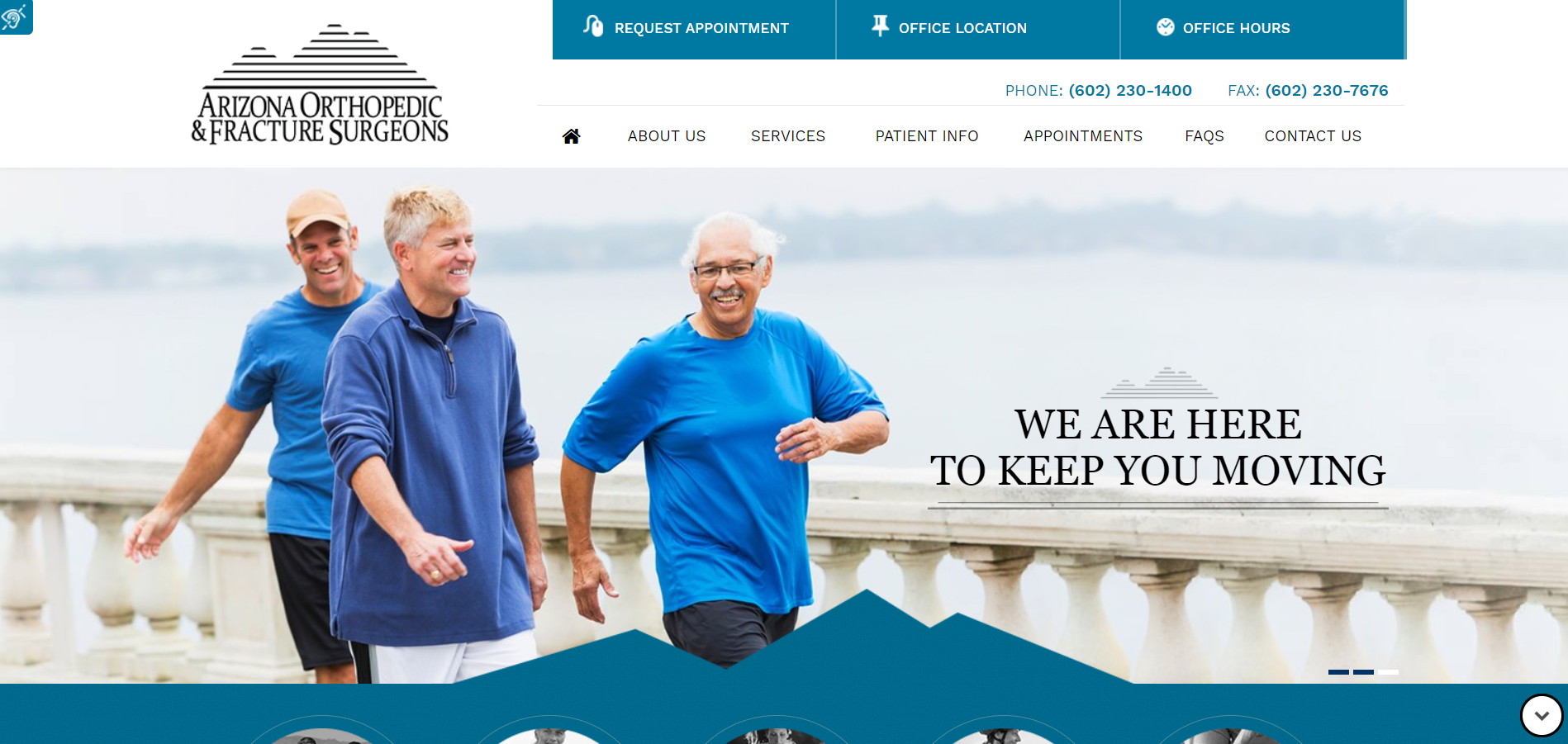
Instead of using rows of palm trees and subtle curves, the web designers opted for sharp edges and energetic photographs of outdoor activities.
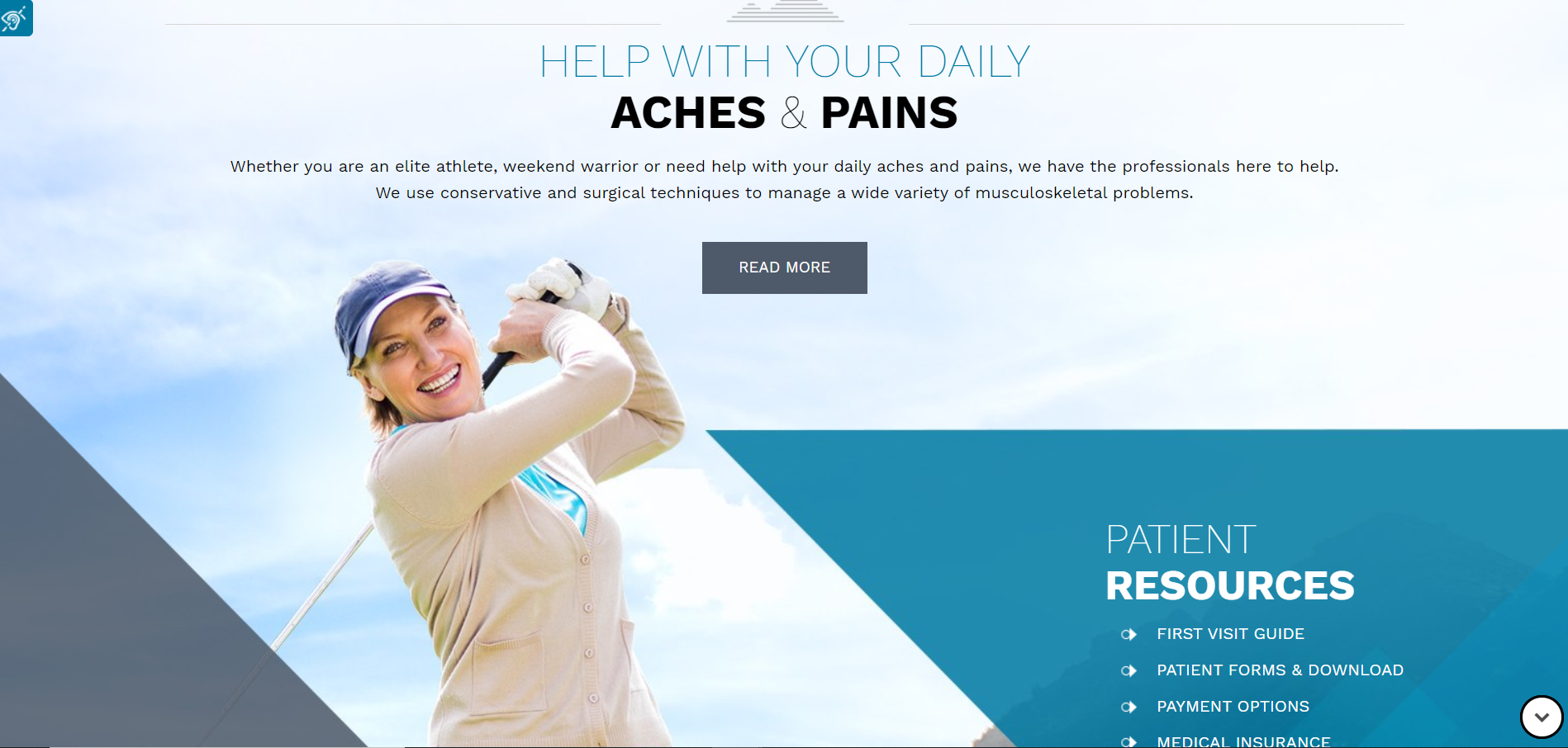
Since patients with joint pains have to avoid certain physical activity, the athletic design comforts visitors that their pains will go away after surgery. To comfort your visitors, you need to understand your audience.
Mobile-First Design
Every website needs to be mobile friendly–there’s no exception. Mobile devices account for more than half of all web traffic. However, doctors and surgeons especially need mobile-first solutions. Think about how most visitors will find your website. Some will search google for “doctors in my area.” In that case, a mobile-first website will rank higher. Ever since July of 2019, Google has used mobile-first indexing. For your website to rank high on search engines, it absolutely must be mobile-first.
However, most people find your website through physician referrals. In this case, it is even more important that your website is mobile-first. After all, when a physician recommends a specialist, the patient will google them as soon as possible. Since most patients don’t bring laptops to appointments, these patients will almost certainly visit your website on a mobile device. If your website isn’t mobile-first, it simply isn’t a good website.
Mobile-first makes all the difference. For instance, let’s look at the Valley Medical Oncology Consultants website again. While it deviates from the standard blue color scheme and the soothing Barrett-esque designs of most medical websites, it’s responsive.
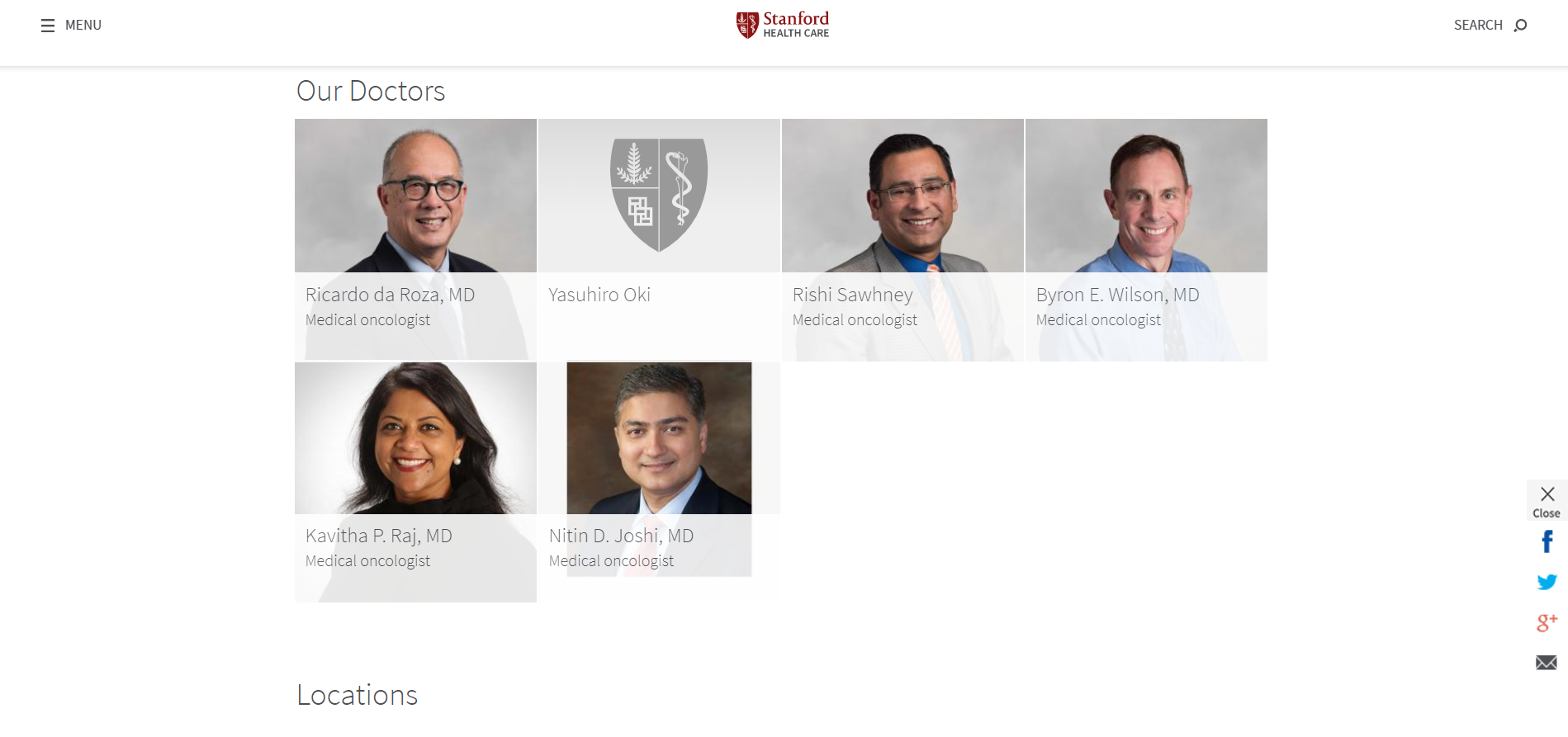
All the important information can be accessed by simply scrolling down. Want to learn more about a doctor? Scroll and choose one.
The Mayo Clinic Website also prioritizes mobile users. It lacks excessive hidden content and most of its functions can be accessed through scrolling. But most importantly, it loads well on mobile devices.
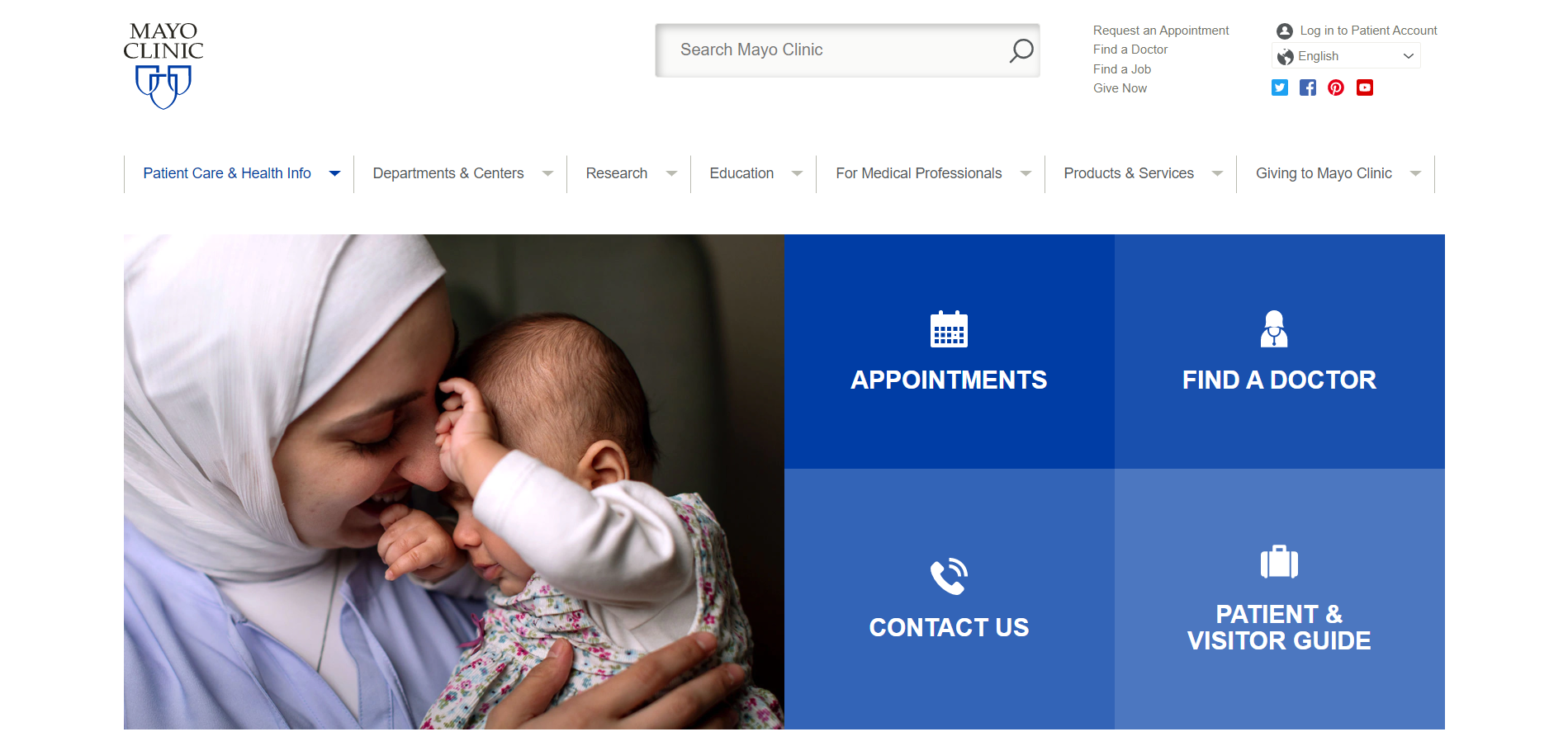
No matter what, your medical website absolutely has to be mobile-first. Otherwise, both your credibility and SEO will suffer.
Getting Started
Merely understanding what makes a medical website stand out isn’t enough. You need to use that information to start building a stunning website. Whether you hire a freelance developer, partner with an agency, or do it yourself, your team should set some goals and standards before getting started. Here are some important questions to ask your team.
What’s Our Budget?
Every project depends on the budget, but while other companies can get away with cheaper semi-custom solutions, doctors and surgeons should evaluate their budget very thoroughly. Some websites for doctors and surgeons, such as the Valley Medical Oncology Consultants website, gain a lot from minimalism. However, other medical professionals especially benefit from custom features, menus, and navigation. The Barrett Plastic Surgery website features a custom WordPress theme and menus, which you can read about in our case study. Depending upon your company, a heavily-customized website may be worth every penny. Discuss your budget in-depth with your financial team and your developers.
Who Is Our Audience?
Never build a product that no one wants. Research your target audience as much as you can before you get started on your website.
Your audience will differ depending upon your specialization. Remember all the differences between the Barrett Plastic Surgery website and the Arizona Orthopedic and Fracture Surgeons website? Each one was designed to appeal to a different audience. On one hand, Barrett Plastic Surgery appeals to women who want to change their appearance. On the other hand, Arizona Orthopedic and Fracture Surgeons appeals to the injured and elderly who want to get active again. Because the audiences want different results, these websites appeal to different emotions.
In some cases, the emotions that govern your target audience may outweigh popular medical design trends. For instance, most websites for doctors and surgeons use a neutral color scheme. However, Phoenix Children’s Hospital uses bright reds and purples.
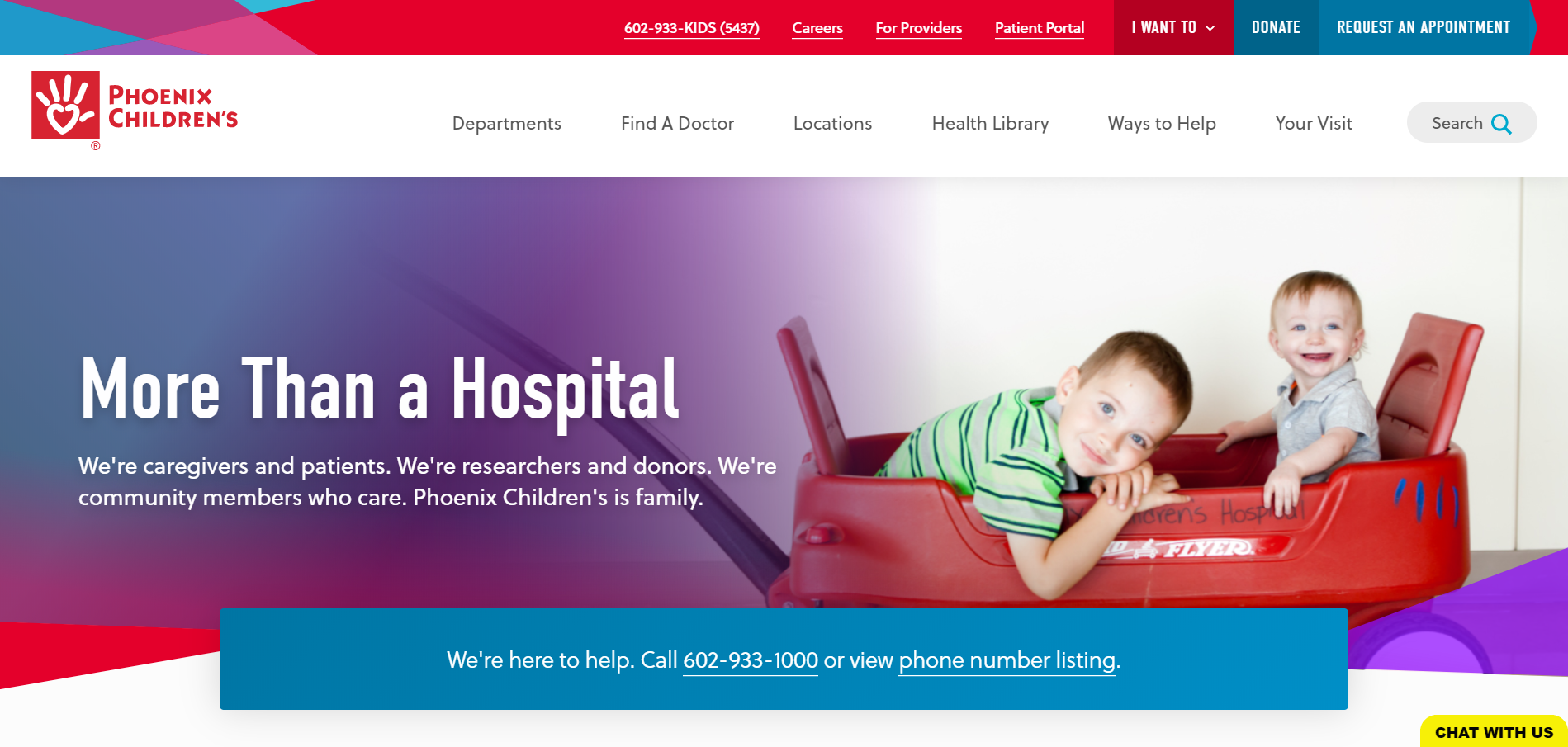
The reason is simple: it’s a children’s hospital. The bright colors and fun micro animations communicate that the hospital is fun and kid-focused. Phoenix Children’s Hospital opts out of the standard medical color scheme to appeal to its audience.
However, in order to appeal to your audience, you need to understand everything about it. As a doctor or surgeon, you are in a unique position to easily interview customers. Take advantage of that easy access to achieve product-market fit. Learn as much as you can about your existing patients and translate their desires into a beautiful website.
Building a new website is a huge step in the growth of your company, so make sure you do it the right way. Take some time to evaluate your needs and look for the development partner that best reflects those requirements. To get started building a stunning human-focused website, contact us online or call us at 888.221.6509.
 Paul A
Paul A 